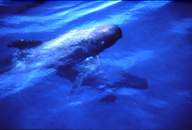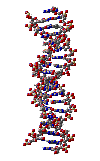|
Dairy farming, cattle milk genes and gene-culture co-evolution (12/2003)
Cattle milk genes, the genetic capacity of humans to digest milk and the habit of using dairy products have evolved together in a unique process called gene-culture co-evolution says a team of researchers in the last issue of the journal Nature Genetics .
Genes are for most species the only way to transfer information across generations but in some species, particularly humans, there also exists cultural transmission that can be defined as the transfer of information between individuals through learning. Species capable of cultural transmission can present gene-culture co-evolution, a process where evolution results from the interactions between the two systems of inheritance.
A well-known example of gene-culture co-evolution is the evolutionary relationship between the genetics of milk tolerance in humans and the cultural habit of dairy farming.
In fact, although we seem to live in a society where almost everyone drinks milk, the reality is, that by the time we enter school, only a minority of us is still capable of digesting it. This results from a reduction of activity of an intestinal enzyme, lactase, which happens after weaning. Lactase breaks down a sugar from milk, lactose, into simpler sugars that can then be absorbed into the blood stream. When dairy products are ingested by lactose intolerant individuals, their incapability to digest and absorb this sugar results in diarrhoea, bloating and flatulence. Lactose intolerance is thought to have originated from the fact that, after weaning, early humans did not use milk in their diet and therefore did not need an active enzyme when adults.
However, it has been found that lactase deficiency/lactose intolerance is much lower in populations involved in dairy farming, like the Europeans, whereas it can reach almost 100% in populations of Asian and African ancestry who were not dairy farmers. Studies found that evolution of this genetic trait, lactase deficiency, was influenced by culture, in this case the habit of a diet with dairy products. Populations with an important dairy culture would undergo positive selection for lactose tolerant individuals as milk supplied a more complete diet and consequently gave individuals higher chances of survival and reproduction. This is an example of gene-culture co-evolution.
Albano Beja-Pereira at the Centro de Investigação em Biodiversidade e Recursos Genéticos, Porto University, Portugal and Gordon Luikart and Phillip England at the Laboratoire d’ Ecologie Alpine, Université Joseph Fourier, Grenoble, France, based on this example of co-evolution decided to ask if there were also evolutionary changes in the cattle’s gene pool belonging to these human populations as consequence of dairy farming culture.
The team of investigators investigated several milk genes in 70 breeds of European cattle and found geographical coincidence between areas where cattle presented a higher variability of milk genes and areas with the older history of dairy farming, namely North Central Europe. These regions also presented the higher percentage of lactose tolerant individuals. This suggests a gene-culture co-evolution between human and cattle with the evolution of cattle milk genes being “pushed” towards higher diversity by the human populations interest in maintaining large herds for dairy products consumption as well as to obtain better and more milk.
Moreover, Beja-Pereira, Luikart and England also found that the geographical distribution of European Neolithic cattle farming sites coincide with both the localisation of the cattle milk showing higher genetic diversity and lactose tolerance in humans.
With this result the team of investigators’ work describes a rare example of gene-culture co-evolution between man and another species as it suggests that farming in the Neolithic era has influenced not only the genetic evolution of humans but also of cattle. In this case, the cultural use of dairy products not only led to selection of lactose tolerant individuals but also affected the genes of another species by increasing the variability of milk genes in cattle. The fact that other genes in cattle do not have the same pattern of genetic evolution as milk further supports the researchers’ hypothesis.
This is also the first time that genetic co-evolution between humans and other species is described outside context of a disease. An example in the context of disease is the co-evolution observed between humans and the malaria parasite in regions endemic for the disease where each species in under pressure to evolve in order to be less vulnerable to the attack of the other.
Beja-Pereira, Luikart and England say, “we found substantial geographic coincidence between high diversity in cattle milk genes, locations of the European Neolithic cattle farming sites (>5,000 years ago) and present-day lactose tolerance in Europeans. This suggests a gene-culture coevolution between cattle and humans”.
This team’s work gives us an important insight into the evolution of human communities and the importance of domestication – a process capable of “shaping” the genomes of both human and cattle. It also identifies North European cattle as a key source of multiple and variable milk genes, an important fact as dairy farming is such a crucial economic resource.

Nature Genetics (2003) vol (35), p-311 - 313 Brief Communications (2003) vol (35), p-311 - 313 Brief Communications
Original paper’s author
Albano Beja-Pereira is a portuguese researcher that works at the Centro de Investigação em Biodiversidade e Recursos Genéticos, Porto University, Portugal and the Laboratoire d’ Ecologie Alpine, Université Joseph Fourier, France.
|
In collaboration with the Observatório da Ciência e do Ensino Superior (OCES)
Financed by the Fundação para a Ciência e Tecnologia (FCT) |





